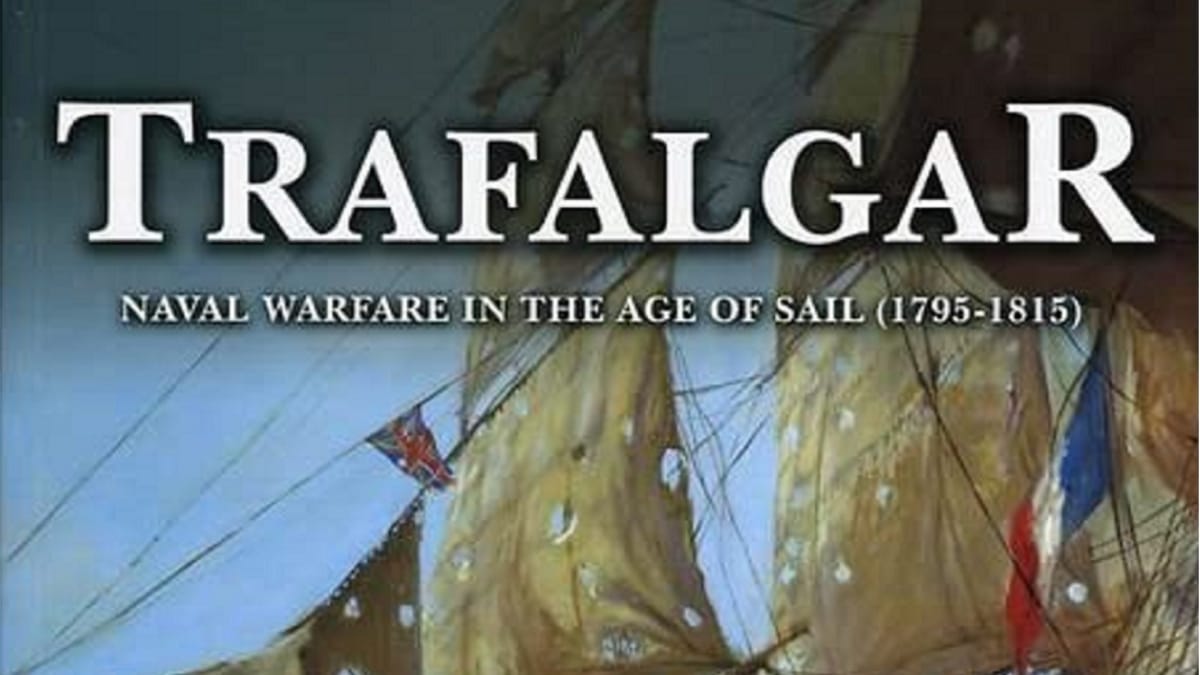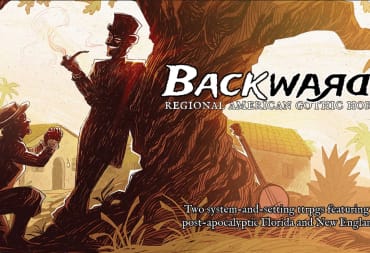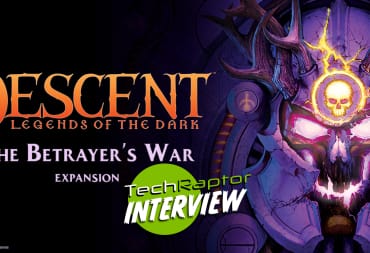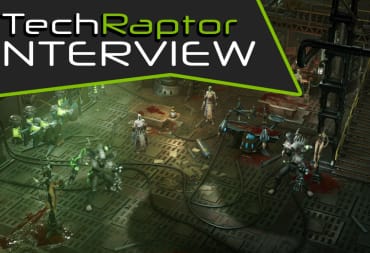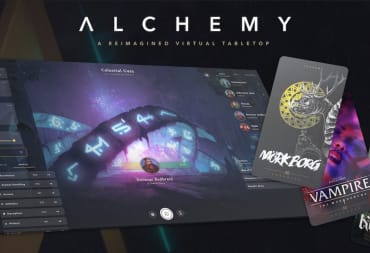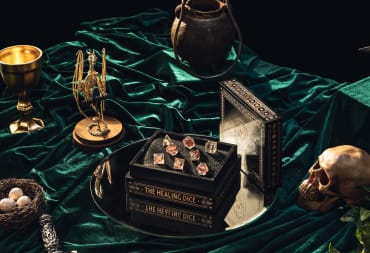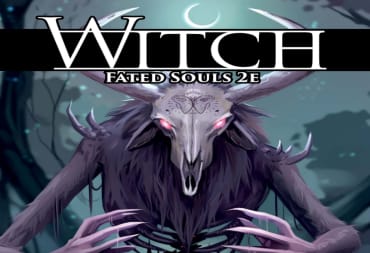If you've been following our Nautical Tabletop Season, then our next interviewee's name and work has come up a lot throughout the season. Having worked with them in the past, it's a pleasure to sit down again with Mark Latham and talk about his work on Trafalgar for Warhammer Historical.
This article forms part of our Nautical Tabletop Month that's running across all of November. We're going to look at different nautical wargames and board games, as well as interview developers about capturing the sea feel on the tabletop. We'll also look at nautical factions in popular wargames along with tabletop accessories that are available to keep your hobby ship-shape. You can see all the articles here on the hub. So come aboard as we set sail and celebrate all games nautical in nature.

TechRaptor: Mark welcome to the TechRaptor Nautical Tabletop Month, for the tabletop gamers who might not know who you are, could you give a little introduction to yourself. How you started tabletop gaming, where you’ve worked, what you’ve worked on.
Mark Latham: I think a lot of people know me from White Dwarf magazine, where I was editor until 2009. After that, I went on to be the editor of Games Workshops games development team, before going freelance in 2012. In the past 8 years, I’ve worked on a crazy number of projects either as designer, editor, background writer or creative consultant (or sometimes all 4). Mostly tabletop skirmish games, but also board games and RPGs. I’ve been lucky to work on some big licenses, taking lead design credits on The Walking Dead: All Out War from Mantic Games, and The Elder Scrolls: Call to Arms from Modiphius, as well as working in various roles on the Harry Potter Miniatures Adventure Game, and The Batman Miniature Game, and a whole host of other stuff. All that, and somehow I still found time to publish 6 novels, I need a holiday!
I’ve been involved in fantasy and SF gaming since I was a kid. Like many people, my first introduction to the miniatures hobby was the classic board game Heroquest, and its sister title Space Crusade (or Star Quest as it’s sometimes known). That completely got me hooked, it was then a short step away from 40k Rogue Trader with its wacky RPG-lite elements, and Warhammer Fantasy Battle (4th edition was my first experience). I was always massively into RPGs, too. I started pretty young, running Advanced Fighting Fantasy adventures for my mates at high school, then later going on to D&D, Call of Cthulhu, Castle Falkenstein, Warhammer Fantasy Roleplay, Deadlands, and a bunch of others.
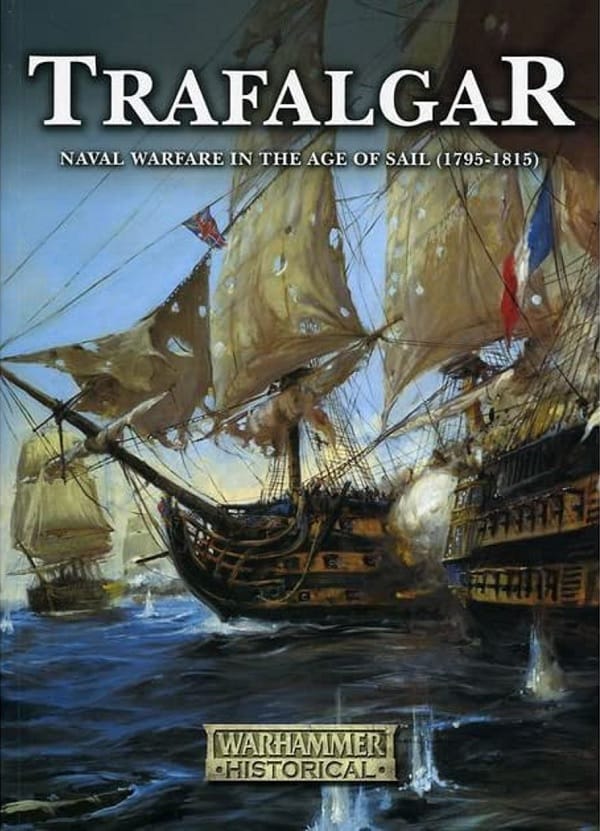
TR: You were the designer behind Trafalgar by Warhammer Historical. Warhammer is best known as a fantasy brand. Where did the idea for Trafalgar come from?
ML: Warhammer Historical was actually a small department under the Games Workshop umbrella, run by Rob Broom. Their flagship game, Warhammer Ancient Battles, was one of the most popular historical mass battle games of all time, and I guess served as a sort of gateway into the historical hobby for many people, due to the accessibility of the brand. It was certainly true for me. I worked with Rob shortly after joining GW, on a game called Legends of the Old West. This was hugely successful and represented the first time the old west gaming genre had seen real attention, with a lovely set of full-color rulebooks, fast-play rules, and a really flavoursome campaign system. Once we’d done the four books, to be honest, we were looking for an excuse to collaborate again, it was just a case of having the right project.
I’d fancied Napoleonic naval gaming ever since I saw the movie Master & Commander. I was already a bit of Napoleonics nerd, and I had a passing interest in the naval side thanks to things like Hornblower, but it was that movie that really made me want to play a tabletop game. The problem was, it was a really opaque hobby. The ships were expensive and time-consuming to paint and rig (rigging was such an eye-opener, I think I managed to get it down to about an hour per ship in the end, but only with lots of trial and error). The games available were almost all what I call ‘simulation’ games, massive attention to every little detail of how a ship handles, but slow and often a bit, dull. And I hate to cast aspersions on games design, but it felt like there were certain conventions in naval gaming that everyone felt compelled to stick to, and breaking those conventions to have a more cinematic, fast and furious experience at the expense of realism was frowned upon by the naval gaming community. So I thought to myself, why do we have to pitch a game solely at that niche market? Why don’t I write a cinematic naval game pitched to a wider audience, and the conventions be damned? I very much had games like Man O’ War in mind, which was a sleeper hit for GW back in the 90s, and was still fun to play. So eventually I pitched the idea to Rob at Warhammer Historical, and the rest is history.
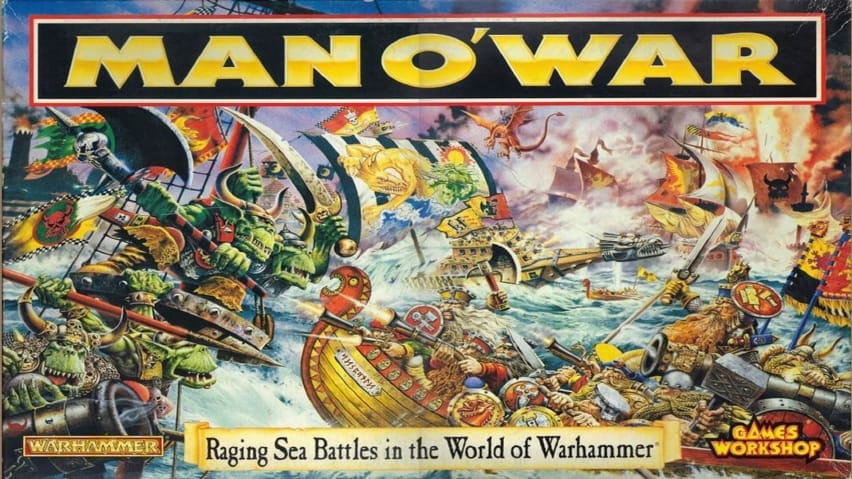
TR: Was Trafalgar a completely new ruleset, or did it have a background in previous Games Workshop games like Man O’War or Battlefleet Gothic?
ML: I think the influence of Man O’ War is pretty clear in Trafalgar, from the way the ships manoeuvre to the how they record damage. However, I was mindful of the fact that it was a historical game, I’m always ready to take liberties, and reduce fiddly concepts to more abstract mechanics, but the customers would still expect a grounding in real history. So a lot of time was spent researching the key features of the Age of Sail warfare, and working out how to incorporate as much historical detail as possible without slowing the gameplay.
TR: What research did you do for Trafalgar? Did you look at any other nautical games? The book also contains a look of historically accurate details about ships, where did you go for that information?
ML: I take research very seriously, a bit too seriously, probably. And although I know I made a few minor errors in Trafalgar, I literally spent months completely immersed in research material. I amassed a collection of about 50 books, including some rare old ones. I visited HMS Victory in Portsmouth with the book’s graphic designer, Mat Hutson (of White Dwarf fame). I dug around in the archive at the National Maritime Museum in Falmouth. I contacted a bunch of historians via the internet to get info on the more obscure ships, commanders, and warring nations (it’s particularly hard to get details on the Russian Napoleonic navy, go figure). The schematics in the book were all vector images drawn by Matt, pulled together from drawings and blueprints from a wide range of sources. I even did a few illustrations by hand to fill in the gaps in the collection, because we were determined to make one of the most complete visual references available at the time.
On the subject of visuals, I think we were the first to include a full-color, photographic painting and rigging guide in a naval gaming book. When I’d first tried to get into the hobby, the know-how to actually assemble, paint and rig the ships, and the correct colors and ensigns to use, was just such a barrier to entry. So Matt and I used the all-out experience of putting together ‘Eavy Metal painting guides and modeling workshops in White Dwarf, and we applied the same principles to Rod Langton’s beautiful 1:1200 scale ships. I think the hobby section is still one of the best I’ve worked on, and a few old-skool gamers bought the book just for that.
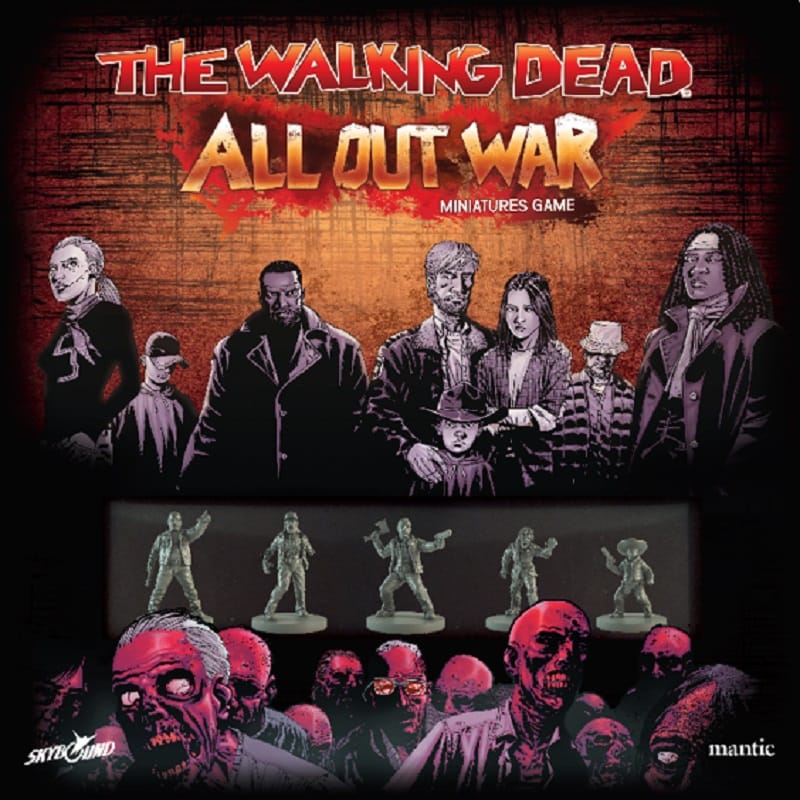
TR: Were you a fan of nautical games at the time? Or have you been since?
ML: I was a fan of the idea of naval gaming, but they were rarely as much as they looked. I loved Man O’ War, even though it was very silly in parts. But such huge strides have been made in the gaming industry over the last decade, we’re now seeing all those genres of gaming that weren’t very accessible finally opening up. I backed Oak & Iron on Kickstarter, and it’s such a fun game. And now we have Warlord Games making multi-part plastic Napoleonic ships, and Mantic Games revisiting fantasy naval gaming in a big way. It’s really getting me back into the naval hobby.
TR: You also worked on the upcoming Kings of War Armada for Mantic Games. What was your input with that?
ML: I was hired as background writer on Armada, and it was loads of fun. I think things have come full circle. When I wrote Trafalgar, I was helped out hugely with playtesting feedback by Gabrio Tolentino. He went on to write Black Seas for Warlord Games, with some nods to Trafalgar. Then Mantic based the Armada game off the Black Seas system, and asked me to write the background. Over the last few years I’ve gradually ensconced myself as background writer on Kings of War, so the idea was to pick up the threads I’d written in the 3rd edition book, and look at them from the perspective of naval warfare, trade, and expansion. I pretty much drew on all my real-world research and tried to work out how the various races of Pannithor would interact on the oceans, what the objectives of their navies should be, how they’d manage their fleets, how they’d fight, what life would be like aboard a Basilean ship as opposed to a Goblin ship, and so on. I remember writing that background section pretty much alongside the Halpi’s Rift campaign book, so I seeded in a few Easter eggs for the fans, as well as dropping some major hints about the future of Pannithor.
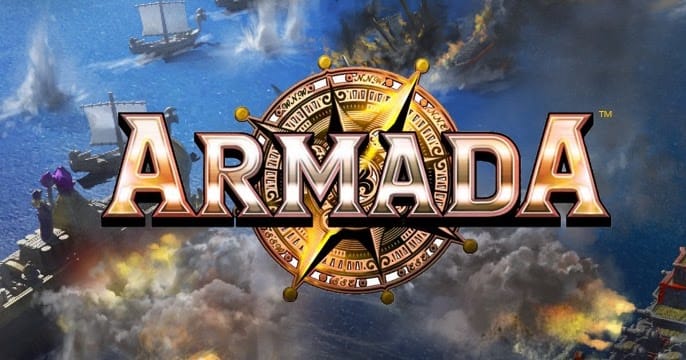
TR: Which is your favorite Kings of War Armada faction and ship?
ML: My favourite to write has to be the Salamanders, who don’t yet have a model release. They’re a race of lizard-men, dispossessed of their homelands, who’ve become probably the best seafarers in Mantica. Their ongoing battles with the undead and the Twlight Kin were some of my favourite bits to write.
In terms of ships, the Basilean Elohi-class is a particular favourite, as it really reflects the faith-driven creed of the Basileans. But the Empire of the Dead Monoliths are super-cool, they represent a proper ‘big bad’ in the game, being these unstoppable arks crewed by the dead, and harnessing the power of Shobik.
TR: We worked on Elder Scrolls: Call to Arms together at Modiphius. How has that been going since its release and what are the future plans for it?
ML: It’s been going well. One of the strengths of Call to Arms is its solo play mode, and given the current situation that’s seen as a big positive. There’s a lot of new content in the works, including Chris Birch’s narrative campaign supplement, plus lots of new characters and factions.
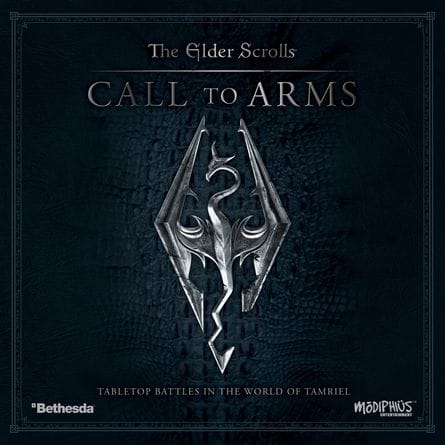
TR: Has the situation this year had an impact on Elder Scrolls: Call to Arms or any of your other projects this year?
ML: It’s been a funny old year. From a work point of view, I’ve been as busy as ever. I think a few companies have been operating on a skeleton crew in-house, and have started using more freelancers as a result. The disparity appears with releases, no one really wants to launch a big new game during a global pandemic (unless they offer a strong solo, co-op, or family game), so a lot of the stuff I’ve been working on has seen delays to their release dates. I’m working further and further out from street dates. It’s my general impression that miniatures are doing well, however. People who’ve managed to keep working through 2020 and therefore still have a hobby dollar to spend are spending it on solo pursuits, a lot of that is miniature painting. When all this is over we’re going to see a lot of nicely painted armies, that’s for sure.
TR: What else are you currently working on and what are your plans/goals for the future?
ML: I’m focusing a lot of my time on my new novel right now. I’ve been so inundated with tabletop work that I’ve ended up taking a short hiatus from fiction, and that’s something I’d like to redress in 2021. However, I still have a bunch of tabletop projects on the go. Naturally, there are new releases for The Elder Scrolls and The Walking Dead in the works, and I’ve got a big fantasy project lined up next year, which has to remain a secret for now, but I honestly can’t wait to start.
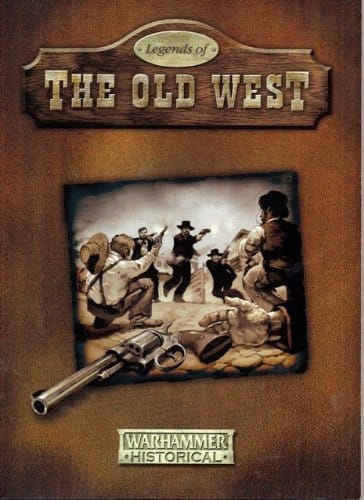
TR: What has been your favorite game to work on during your career so far?
ML: That’s a tough call, it’s like picking your favorite child. I guess using that analogy, my first-born was Legends of the Old West, a Warhammer Historical game loosely based on the Lord of the Rings Strategy Battle Game system. It had a campaign system that was a big nod to Mordheim (my favourite old GW game), and was such a blast to work on. It taught me a lot about putting a ruleset together, and I still play it occasionally now.
The physical product I’m most proud of is Waterloo, another Napoleonic game, and the sister game to Trafalgar. Again, that was done with Matt Hutson, and I think we produced one of the most beautiful, coffee-table-format rulebooks the historical market had seen up to that time. But in terms of rules design, I think my favorite so far is The Walking Dead: All Out War (adapted also for TWD: Call to Arms and Here’s Negan). I think it’s the most complete realization of my initial vision I’ve achieved, small games, tight, tense, hanging on a knife edge, with total party kill on both sides a real possibility.
TR: What tabletop games do you currently play?
ML: Right now, due to lockdown, very few. For a few years now I’ve been veering more towards board games than wargames in my downtime. I think doing this for a living, you risk becoming jaded, when you spend all day in a playtesting mindset, you need a totally different type of game to allow you to switch off. So some favorites of the last couple of years are Arkham Horror 3rd Edition, Nemesis, Conan (by Monolith), Brass: Birmingham, and Letters from Whitechapel. An absolute sleeper hit for me has been the Funkoverse games, I didn’t expect to like them, but they’re neat and well balanced, and I’ve even persuaded my wife to have a game of the Harry Potter set, so they have a really broad appeal. I also play Warhammer Quest when time allows, one of my all-time favorite dungeon-crawlers, often emulated but never beaten in my opinion. On top of that I still roleplay occasionally. I’m currently partway through a Judge Dredd (WOIN) campaign run by Games workshop luminary Gav Thorpe. It’s fair to say my hobby time is pretty varied these days.
TR: Thank you very much for taking the time to talk to us Mark, it's been great to get a sense of your process across the range of products you've worked on.
You can find out more about Mark and his projects at his website.
Have a tip, or want to point out something we missed? Leave a Comment or e-mail us at tips@techraptor.net
